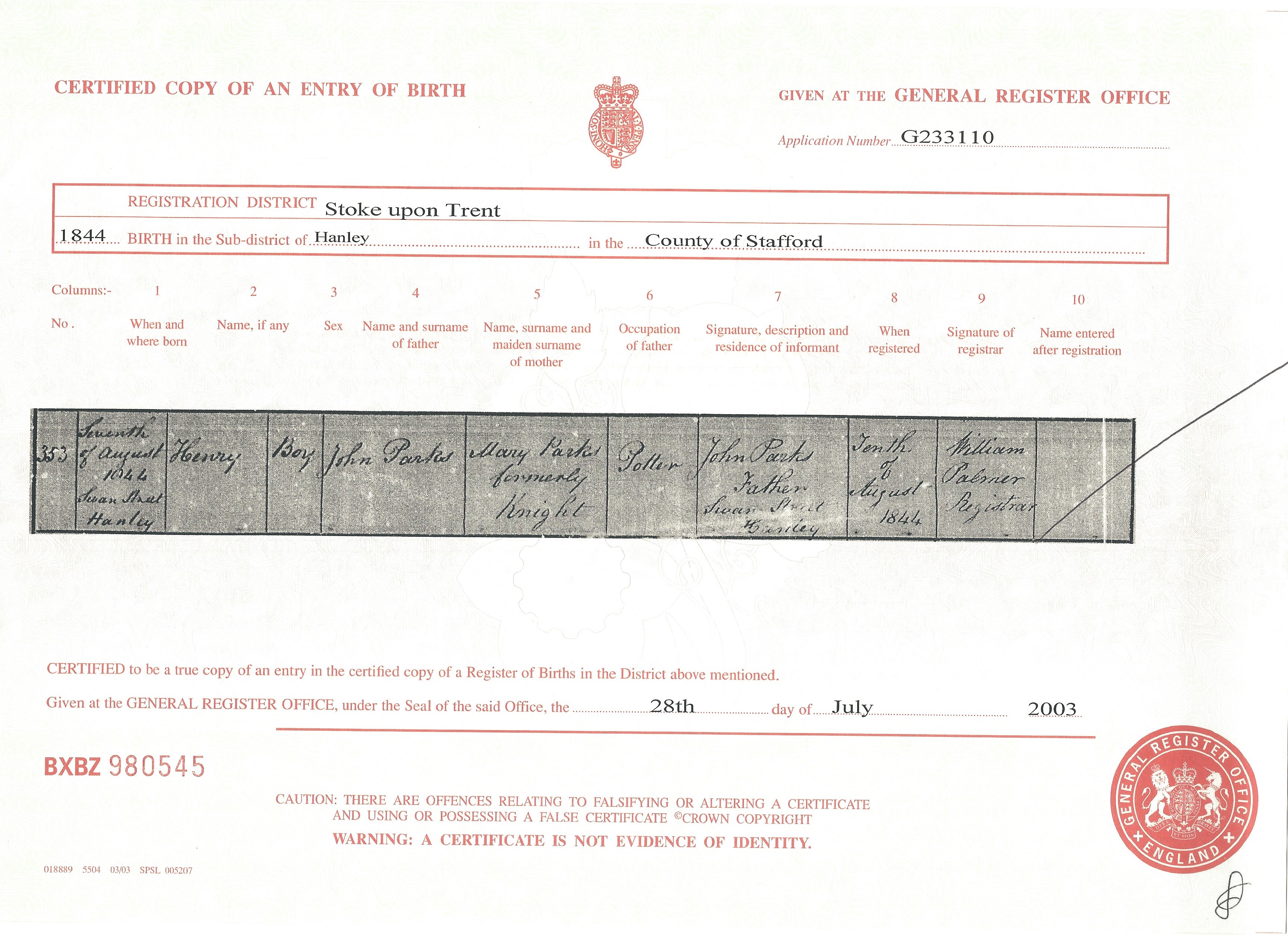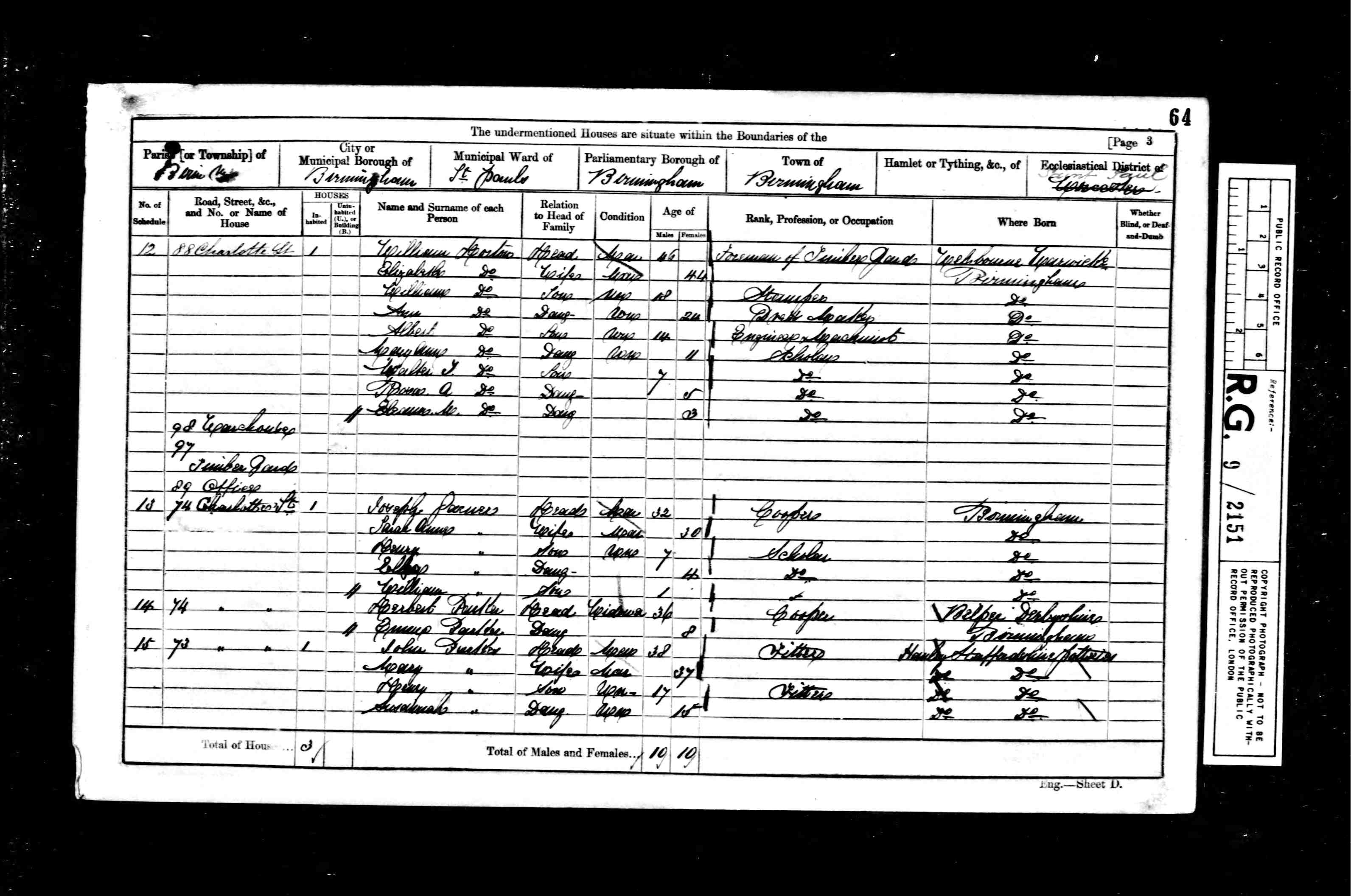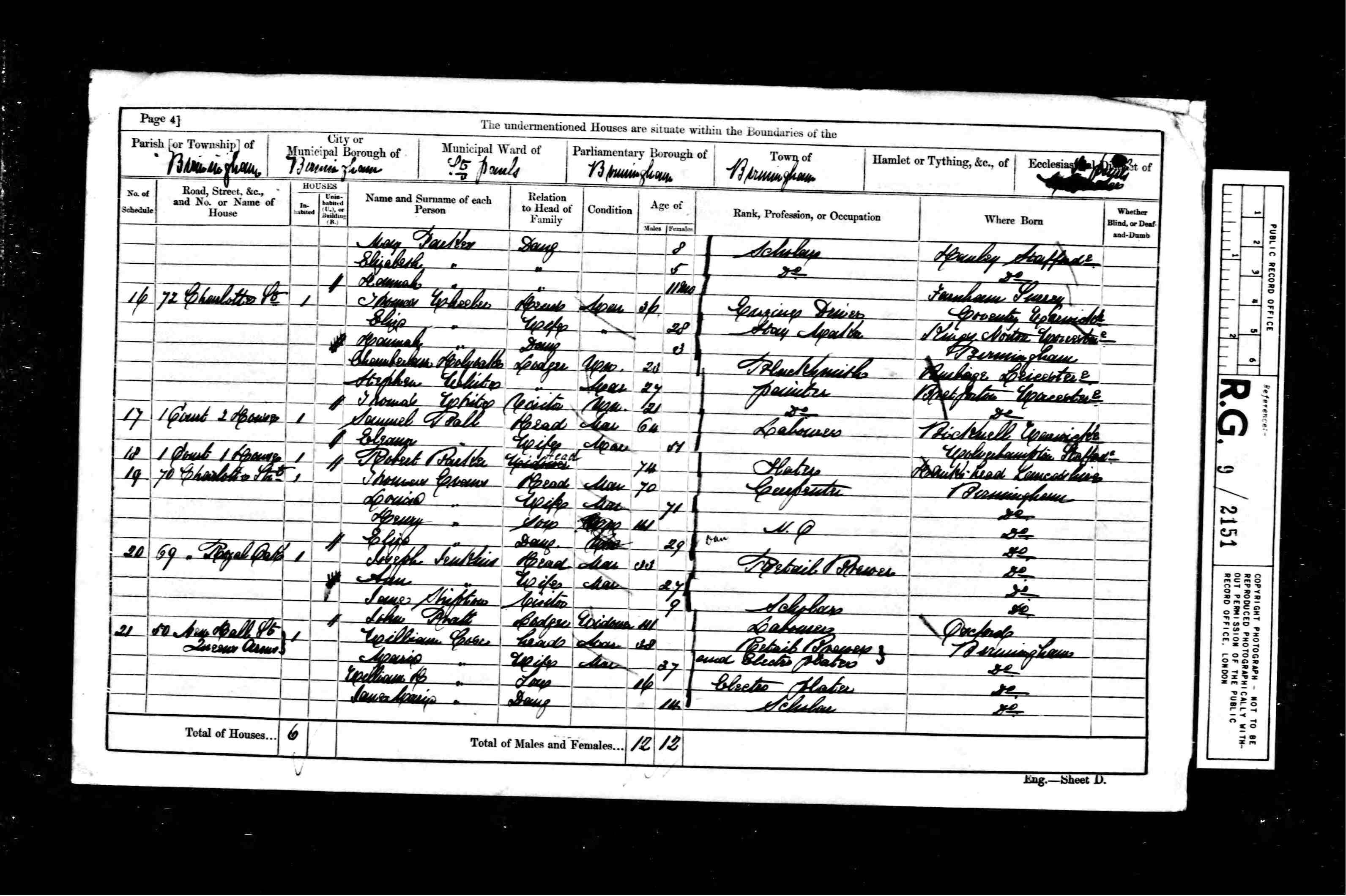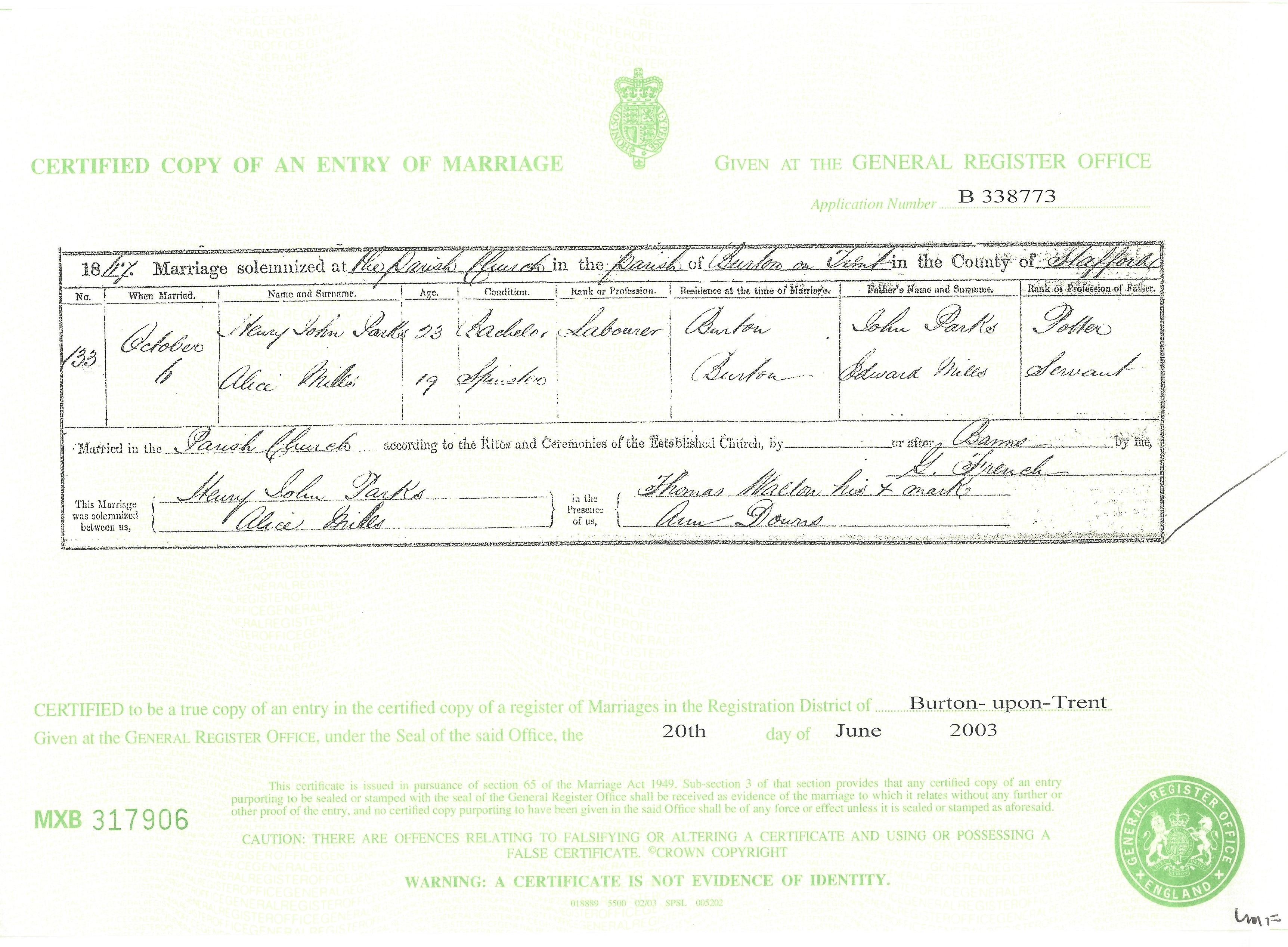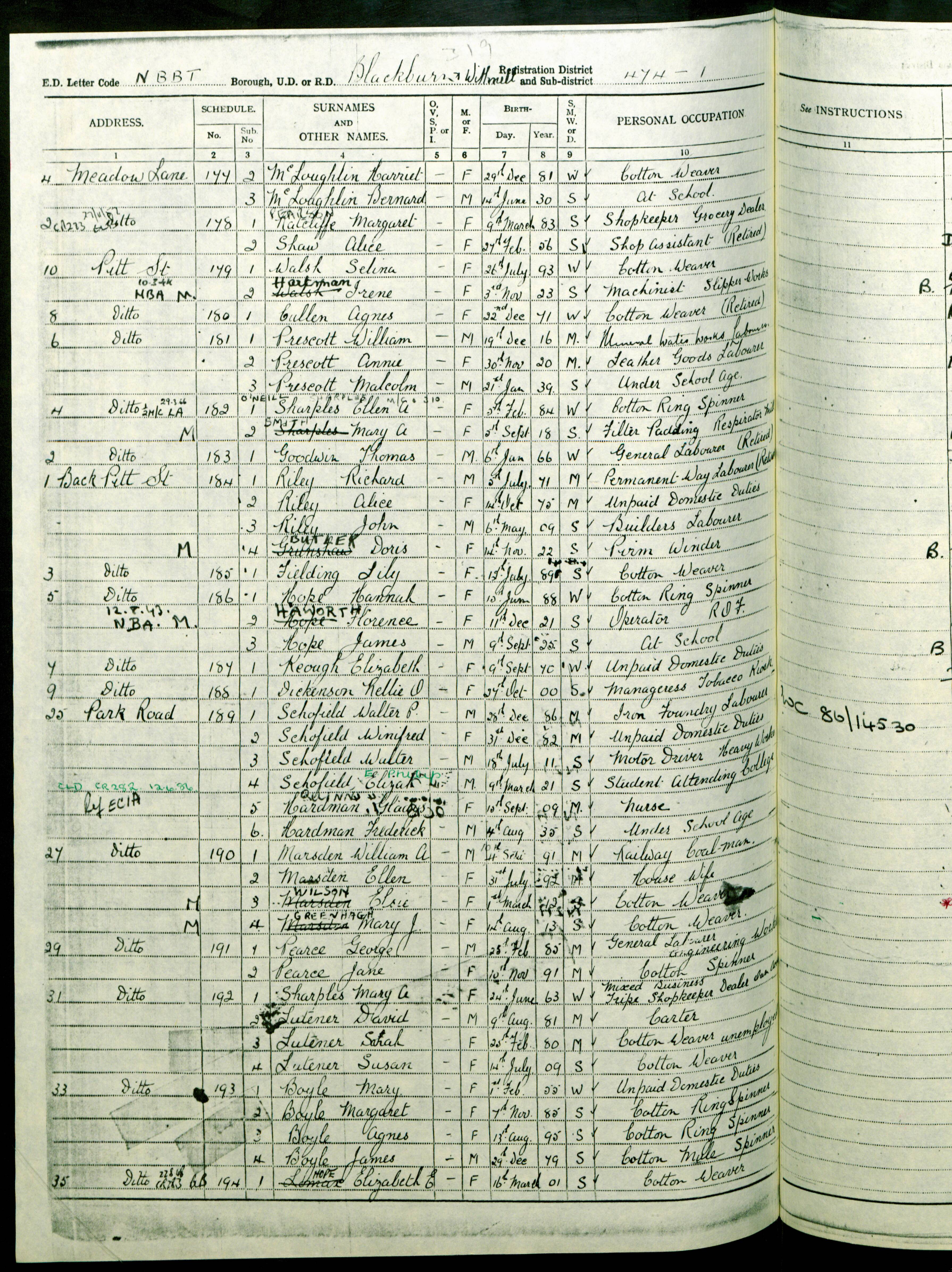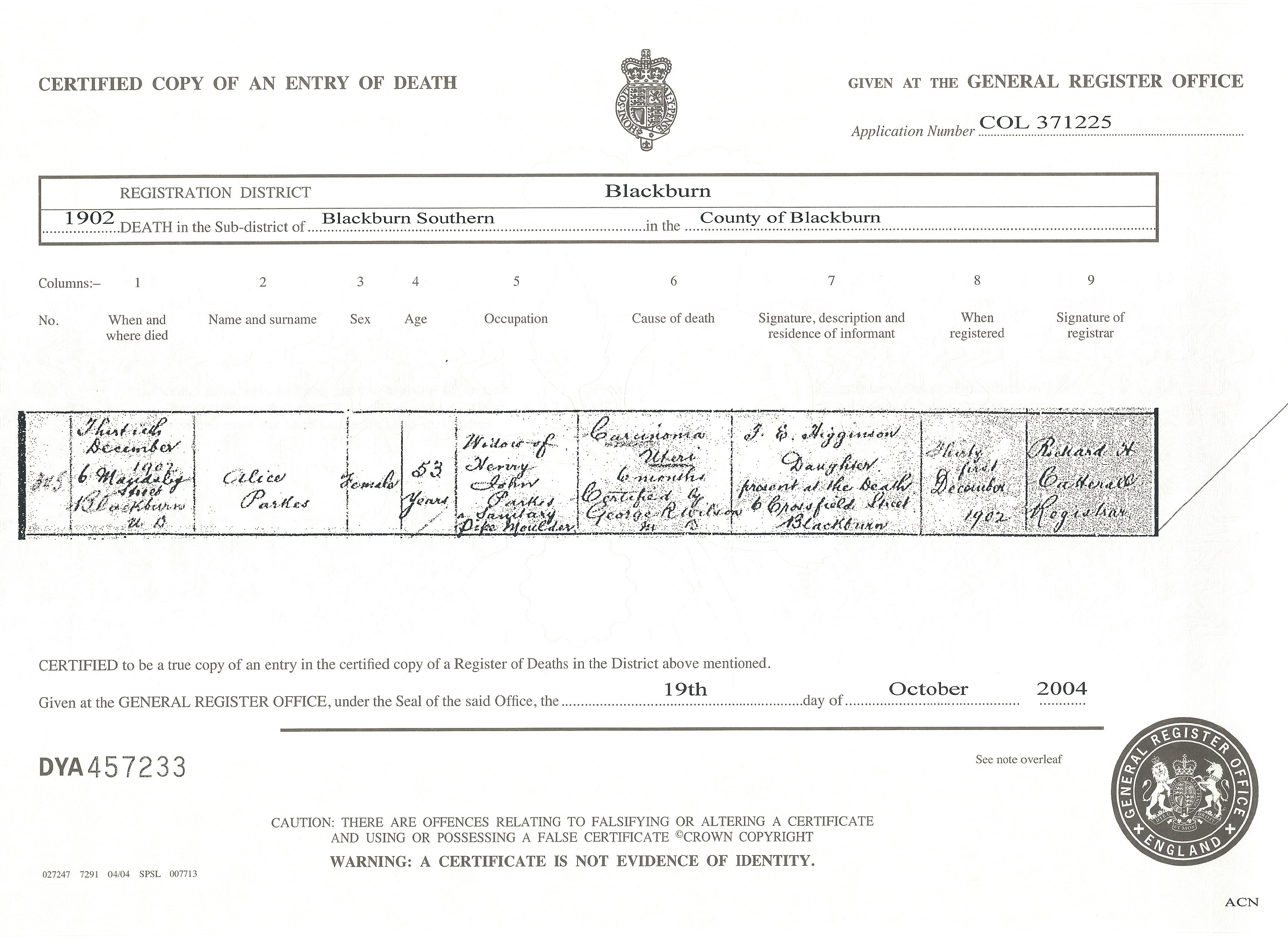Henry John PARKES was born about 7 August 1844 in Hanley, Staffs, and was a potter.
In 1861 he was 17 and living with his parents in Birmingham, working as a fitter with his father, possibly installing architectural sanitary ware or terracotta bricks.
He married Alice MILES in Tamworth in 1867 and they had six daughters: Fanny Elizabeth, Rose Ann, Clara, Alice, Mary Ann and Ada.
In 1871 the family were staying with Henry's father John in Hepworth, Yorkshire. Alice would have been pregnant at the time of the census. She returned to Tamworth for the birth of Rose Ann in August 1871, but gave her address as Hepworth. Their next two daughters were also born in Tamworth.
It's not clear that Henry ever lived in Tamworth despite marrying there in 1867 and having four children born there between between 1869 and 1876. It's possible that his wife returned to Tamworth, her hometown, for the birth of their children, or at least until her mother, Mary MILES nee TILL, died in 1879.
One of the Britain's most famous architectural terracotta manufacturers, Gibbs and Canning, was based in Tamworth, and he may have been employed by the company at some point, perhaps as a fitter moving from project to project. Gibbs and Canning provided all the terracotta used in the Natural History Museum in London, built between 1873 and 1880, and the exterior of the Royal Albert Hall completed in 1870.
Although his fourth, Alice, was born in Tamworth, she was registered in Ashton-under-Lyne, near to Staleybridge where his fifth daughter was registered. This suggests that he was working in that area between 1876 and 1878.
By 1881 they were living at 3 Eanam, Blackburn, close to the railway station in the centre of the town. Interestingly, almost every other house on Eanam was unoccupied at the time, possibly as the houses were still under construction.
It appears that his daughter Mary Ann died young, and the most likely death registration was in Kidderminster, Worcestershire. Perhaps he was working there at the time.
In 1890, at the time of his daughter's wedding to William FORREST, he was working as a brick layer, which may have been terracotta bricks.
In 1891, he was living with his son-in-law, James Higginson, and his family at 49 Grimshaw Park Road. In 1991, he was described as a "terra cotta maker".
He died in late 1901 of exhaustion after two years of suffering spastic paraplegia, which causes, if it has the same meaning today, progressive difficulty walking due to increasingly weak and taunt (spastic) muscles. It is believed to be a genetic disease.

